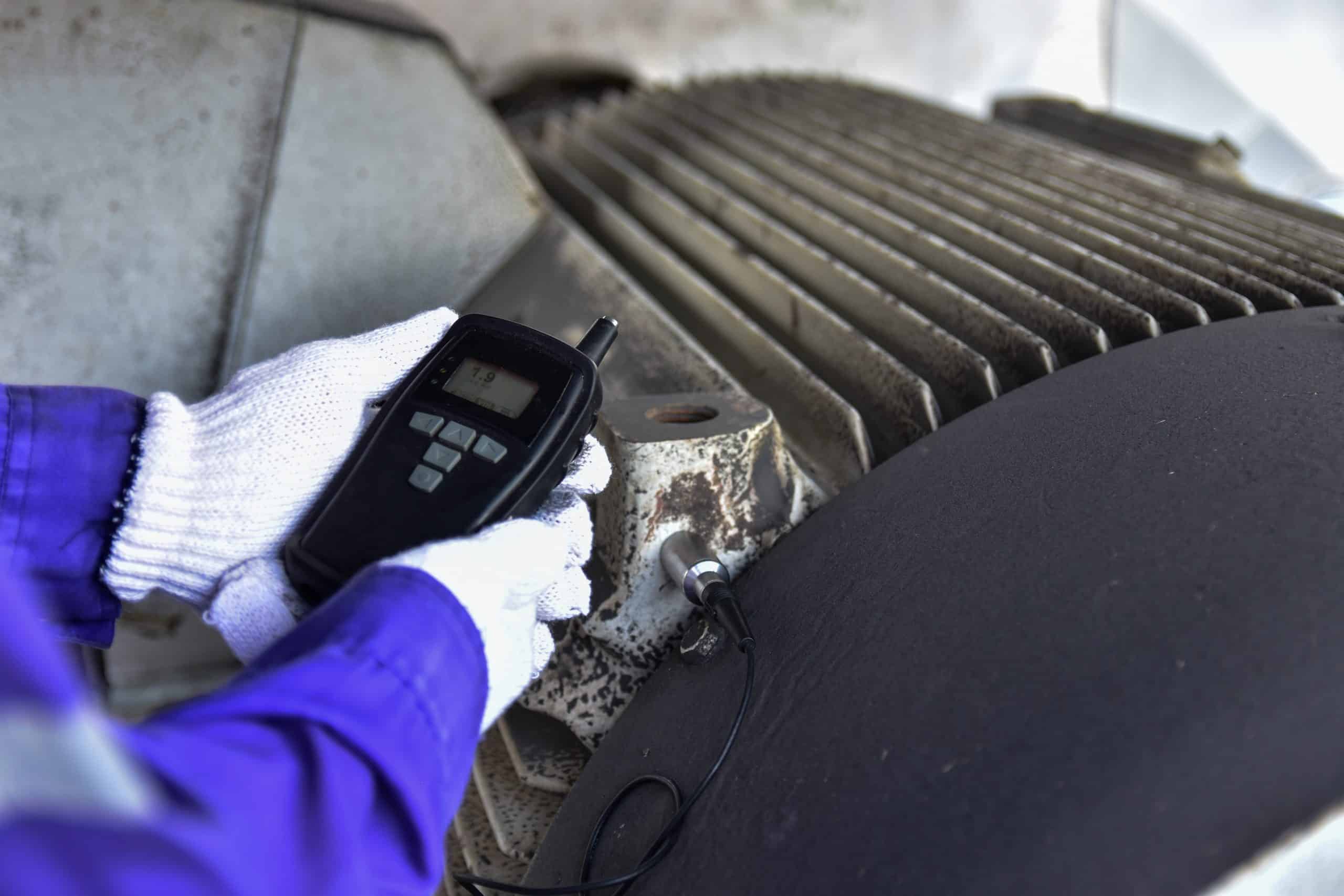When leaks occur in pressurized systems — such as compressed air or gas systems — the leak will emit a sound at a frequency above that which can be detected by the human ear. Ultrasonic leak detection uses advanced sound emission technology to identify and locate these leaks, which is accomplished by detecting the high-frequency vibration that occurs in the air or the medium at the source of the leak.
Ultrasonic leak testing is extremely useful in support of predictive maintenance operations, since these often-tiny leaks are indicative of larger operational issues to come, including drops in efficiency as well as safety issues and whole-system shutdowns.
Examples of ultrasonic predictive maintenance
Ultrasonic maintenance can take many forms and can be applied to several types of equipment. Most frequently, ultrasonic technology will be used for compressed air leak detection, gas leak detection and vacuum leak detection. It can also be used for bearings and pumps.
- Inspection of complex air and gas pipework systems: Compressed air is a critical need in keeping a facility operational. Many facilities also require the availability of other compressed gases. These key needs are delivered from a central location throughout the facility via a complex network of pipes. A leak anywhere in the system can mean a drop in pressure that will affect equipment performance and increase energy usage — and costs. Ultrasonic leak detection is the fastest and most reliable way to identify even the smallest leak in a system — which can later become a major problem.
- Safety improvements: When compressed air is leaking, loss of efficiency is the primary concern. However, when hazardous or dangerous gases are leaking from a system, safety quickly becomes the main concern. These leaks must be detected and acted upon more quickly since they can put operators and other personnel in immediate and grave danger.
- Bearings and pumps: These types of rotating equipment have distinctive acoustic signatures in terms of frequency and vibration of the surrounding air. Regular checks with ultrasonic inspection equipment can reveal the underpinnings of problems, for example, if the equipment is operating above an acceptable maximum of rotation, or if current operation conditions differ significantly from historical average conditions.
- Integration of ultrasonic inspection equipment and today’s manufacturing technology: While ultrasonic leak detection has been available for quite some time, it can now be integrated into maintenance technology systems for more automated, efficient, and effective operation.
Processes that were previously completed manually — testing, documentation, prioritization, and maintenance ticketing — can now be completed automatically, with results from numerous testing points being constantly fed into a central data and analytics system. This results in increased maintenance efficiency and effectiveness.
Ultrasonic leak detection remains a complex process, with results that require extensive expertise to interpret. In addition, effective integration of ultrasonic maintenance technology must be carefully considered and planned. Outsourcing these services can provide the technology and systems expertise needed to maximize your investment. ATS includes ultrasonic leak detection as part of our predictive maintenance services, which can also involve surge support, technical workforce solution and comprehensive maintenance solution.
Benefits of ultrasonic leak detection
Benefits of ultrasonic leak detection include:
- Lower energy costs: Because ultrasonic detection identifies even the smallest leaks as soon as they occur, you can be almost certain that a compressed air or gas system is operating at peak efficiency at a much higher rate than previously.
- More reliable air and gas delivery: Systems with leaks require more energy to maintain the same level of pressure. With enough leaks, the system will not be able to perform as needed. This can create a domino effect of inefficiencies in end-use processes that require compressed gas or can result in a shutdown of these processes to address the issue.
- Less downtime: Identifying leaks before they become a major problem means that you can avoid downstream shutdowns, allowing processes throughout the facility to continue at peak performance.
- Maintenance cost savings: By identifying leaks when they start, repairs can be scheduled for a convenient time to reduce production impact. Catastrophic failures requiring more extensive, costly repairs are reduced or eliminated.
- Improved safety: Hazardous gas leaks pose a significant danger to all facility personnel. Ultrasonic leak detection could ensure that these leaks are identified early and that your safety standards are practiced.
When to use ultrasonic leak detection
Ultrasonic leak detection is useful in a broad range of applications. The below scenarios illustrate some of the most common times when leak detection is helpful:
- For extensive or complex pipework and air/gas distribution systems
- When energy efficiency is a critical concern, or if energy usage is on the rise
- When hazardous gases are in use
- When early detection of maintenance concerns in compressed air and gas systems is beneficial
- When additional condition checks for rotational equipment such as pumps and bearings are advantageous for continued optimal operation
Ultrasonic leak detection services could save you …
Time savings …
- Less time manually checking for leaks throughout a system
- Less time documenting leaks and completing maintenance tickets
- More efficient, automated maintenance prioritization
- Less time spent on extensive repairs
Cost savings …
- Vastly improved overall energy efficiency
- Less system and equipment downtime
- No more need for emergency repairs
- More efficient maintenance overall
Helping manufacturers around the world
With over three decades of expertise in industrial maintenance and reliability, ATS offers best-in-class solutions in advanced technologies, automation and systems — including the most advanced applications of predictive maintenance. All provide increased reliability, safety, and operational efficiency.






